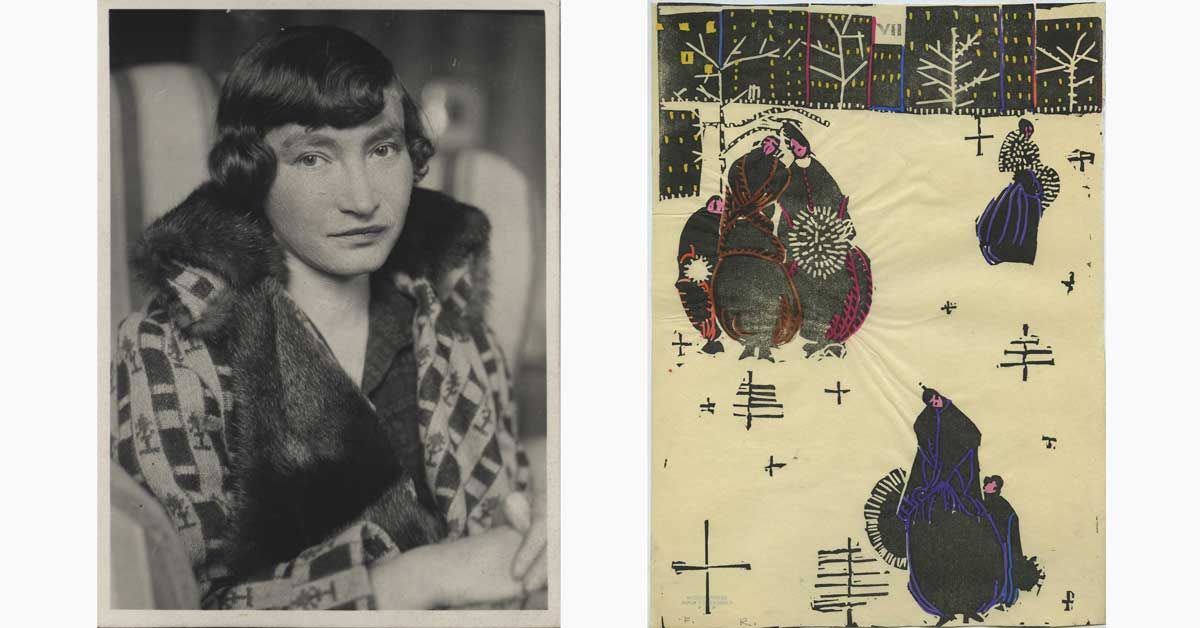12 October 2023
MAK exhibition on the life and work of Wiener Werkstätte artist Felice Rix-Ueno, who inspired Albert Kriemler for the Akris SS2024 collection

The MAK - Museum of Applied Arts Vienna's new focus on the historical exploration of 'Women Artists of the Wiener Werkstätte' began two years ago with an exhibition of the same name, which followed in the footsteps of the designers to learn more about their work and social circumstances, such as education and working conditions (article).
Today the MAK released information about the upcoming exhibition 'Stars, Feathers, Tassels' on the life and work of Wiener Werkstätte artist Felice Rix-Ueno, whose fabric designs inspired Akris head designer Albert Kriemler for the brand's Spring/Summer 2024 collection. Vogue reported on the recent Akris runway presentation in Paris, noting that the MAK exhibition 'Stars, Feathers, Tassels' is sponsored by Akris and that the fashion interpretations of the work of 'Lizzi' Felice Rix-Ueno are collectible like art objects (fast checked today at https://www.vogue.com/fashion-shows/spring-2024-ready-to-wear/akris).
Albert Kriemler was in Vienna in the spring of 2023 and was impressed by Felice Rix-Ueno's fabric samples. He decided to use her designs as inspiration for the Spring/Summer 2024 collection.
Now, from 22 November 2023 to 21 April 2024, the collection of fabric patterns, fashion and home accessories - a total of some 200 objects - will be made accessible to the public in the context of the life of Felice Rix. She was born in Vienna in 1893 and became one of the most important designers of the Wiener Werkstätte. Later, she moved to Japan, where she became a successful university professor and founder of her own design institute. The context of the Jewish-liberal environment in which she was born and the history of the Rix family, especially their emigration due to persecution in the 1930s, will also be explored.
As a student of Josef Hoffmann, Felice Rix began designing for the Wiener Werkstätte in 1914 and was one of its most important designers until it was dissolved in 1932. In 1925 Felice married the Japanese architect Isaburo Ueno, who worked as an assistant to Josef Hoffmann, and moved with him to Kyoto. She returned regularly to Vienna to continue her work for the WW. The exhibition will show that her designs for the Wiener Werkstätte were influenced by Japanese formal language and techniques, such as dyeing stencils presented with a 1928 wallpaper collection.
Images, from left: Felice Rix-Ueno. Photo: Anonymous, around 1925; © MAK. Right: Felice Rix-Ueno, illustration for the portfolio Mode Wien 1914/5
linocut, hand-colored, on Japanese paper. Photo: © MAK. |


